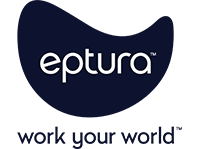
The holiday season should be a time of celebration, not concern. But for facility and workplace leaders, this time of year brings more than twinkling lights and time-off requests; it’s one of the most challenging periods for maintaining site security.
Across the globe, property crimes spike during the holidays as buildings sit emptier, staff rotations change, and deliveries surge. Add in the distractions of year-end deadlines and seasonal events, and it’s easy to see how even a well-secured building can become vulnerable.
That’s why now is the moment to act. Before staff start heading out for holiday breaks or end-of-year maintenance begins, facility, security, and maintenance teams need to get aligned. Who’s in the building, when they’ll be there, and how they’ll gain access are questions that can’t be left unanswered.
With fewer people on site and more visitors, vendors, and contractors coming and going, you need systems that can verify every identity and every access point.
Key insights
- Holiday periods increase facility risk. Global data shows property crimes rise sharply during the holidays, making proactive facility planning essential
- Visibility is your best defense. A modern visitor management system with facial recognition provides the oversight needed to control access and maintain compliance
- Cross-team collaboration drives security success. Facility, IT, and security alignment ensures smooth operations, even when staffing is reduced or schedules shift
A modern visitor management system (VMS) with facial recognition capabilities gives you that visibility — ensuring that only approved individuals enter and that every interaction is logged and traceable. It’s also the perfect time to tighten coordination between your internal teams: facility managers setting reduced building hours, security monitoring access logs, and maintenance using downtime to clear backlogged work orders without compromising safety.
The goal isn’t just to survive the holiday slowdown; it’s to use it strategically. By combining smart planning, integrated technology, and strong collaboration, you can safeguard your facilities, protect your people, and turn the holidays into a model of operational readiness instead of seasonal risk.
Holiday-specific facility security risks
Property crime tends to rise between late November and early January, when occupancy levels drop and security coverage thins. A U.S. analysis found that property crimes increase by roughly 10–15% during December compared to other months. Globally, the pattern is similar: when offices are quieter, opportunistic intrusions increase.
For facility leaders, that means identifying how your own operations change during this time. Staffing reductions, extended closures, and fluctuating maintenance schedules can all create new vulnerabilities. Unattended lobbies, darkened parking areas, and reduced access monitoring can quickly become points of exposure.
The first step is to map your risks. Review which days or weeks will have limited staff presence, determine when deliveries or maintenance work are planned, and confirm who will be responsible for oversight during those periods. Treat the holiday calendar as a living security document—something your team monitors and updates weekly.
Common weak points in buildings
Even the most sophisticated facility has areas that become weaker under seasonal stress. Access control, visitor management, and perimeter monitoring are the three areas most often affected. When fewer people are present, an open door or misplaced credential may go unnoticed.
Visitor and contractor management also becomes a challenge. Many facilities use the quieter holiday period to schedule overdue repairs or upgrades, meaning more short-term workers on site. Without proper identity verification, even well-intentioned contractors can inadvertently create access vulnerabilities.
Meanwhile, parking lots and loading docks are easy targets when traffic slows. Ensuring cameras, lighting, and motion sensors remain active in these zones can deter intrusions. Conducting a short “holiday security walk” with both facility and security teams can help identify physical and procedural blind spots before they turn into incidents.
Collaborating with security teams
The most effective security plans begin with collaboration. Facility, maintenance, IT, and security teams should meet well before the holiday period to align on coverage, responsibilities, and escalation protocols.
During this planning session, outline which areas of the building will remain open, which will close, and how systems such as lighting, HVAC, and access control will adjust. Maintenance can use this time to plan non-critical repairs while security ensures the right permissions are in place for any visiting contractors.
Equally important is communication. If your organization uses a digital operations dashboard or CAFM platform, make sure holiday hours, building maps, and emergency contacts are visible to everyone. Document every schedule change and share it with leadership so there’s no confusion once reduced operations begin.
Security tech and best practices
Technology does the heavy lifting during low-staff periods, but only when it’s used strategically. Start by auditing your current systems: visitor management, access control, and surveillance. Verify integrations are active and that temporary credentials expire automatically after use.
If you haven’t already, consider implementing facial recognition or other biometric access features. These tools eliminate badge sharing and help confirm identity in real time, providing stronger verification when new or temporary visitors arrive.
Smart cameras and AI-enabled monitoring systems can also detect unusual access patterns, after-hours activity, or unauthorized presence in restricted zones. Many facilities are layering this data into their integrated workplace management platforms to trigger automated alerts for the security team or facilities lead.
Training remains just as critical as technology. Before the holidays, conduct a brief refresher session for front desk, security, and maintenance staff to review how to log visitors, respond to alarms, and escalate incidents. Simple awareness—knowing what looks out of place—can prevent the most common security lapses.

Preparing for reduced staff or hours
A successful “holiday mode” plan starts with knowing who’s in the building and who isn’t. Facility leaders should finalize occupancy maps showing which zones remain operational, which are closed, and which will host contractor work. Security should adjust access rights accordingly and confirm that closed areas are both physically and digitally locked.
If you plan to shut down specific floors or departments, coordinate with maintenance and IT to deactivate lighting and HVAC while keeping surveillance active. This not only cuts costs but also narrows the area that needs monitoring.
Reduced staffing doesn’t mean reduced awareness. Assign a single point of contact for on-call facility and security escalation, and confirm that all critical systems—from cameras to badge readers—are remotely monitored. Use downtime to your advantage: schedule preventive maintenance, run security tests, and prepare systems for the new year.
When normal operations resume, conduct a brief post-holiday review. Audit temporary access credentials, review VMS logs, and note any irregularities. Document what worked and what didn’t so next year’s plan starts even stronger.
Turn holiday downtime into a security advantage
The holiday season doesn’t have to be a security risk—it can be a test of how well your organization coordinates, communicates, and uses technology to stay proactive. With integrated systems, a strong visitor management process, and a team that knows exactly what to expect, you can protect your spaces while maintaining operational efficiency.
Start now. Align your teams, update your VMS and access control policies, and schedule that pre-holiday planning session. The season moves fast, and preparedness today means peace of mind tomorrow.









